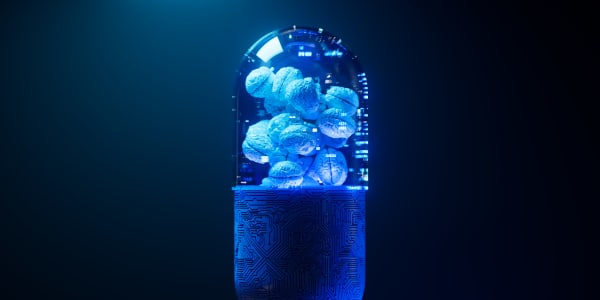CNBC's Technology Executive Council is dedicated to the digital transformation of companies and organizations across sectors of the economy. Ogi Redzic, chief digital officer at Caterpillar in charge of the industrial giant's Digital Vision, recently provided CNBC TEC with three lessons Caterpillar has learned as part of its own digital transformation.
1. Technology is complicated, but digital strategy should be clear and simple.
As part of Caterpillar's enterprise strategy unveiled in 2017, we determined digital is an enabler to our broader business, not a business itself. That was a big shift in mindset for our company. Define what success looks like and create a clear and simple digital strategy that aligns to the broader business model.
It is equally important to speak about digital activities consistently across the enterprise, so there is a critical need for a simple digital model, with a common lexicon, communicated over and over again.
Then, rather than handling dozens if not hundreds of different projects and applications, you need to focus on a few initiatives that would make the biggest impact on your strategy and create a strong foundation to drive a common experience for your customers.
One area of focus for Caterpillar is predictive analytics. For our customers, unplanned downtime is not an option, so we are making investments in analytics to not only detect failures but predict them before they even happen, saving customers both time and money.
Finally, digital doesn't mean going for the latest and greatest technology development but applying the appropriate technology for your customers and for your desired business outcome, regardless of where that technology is in its adoption curve. Latest is often not the most appropriate.
2. Business customers use tech in their personal lives, and that matters.
If you wouldn't tolerate a bad solution as a consumer, you certainly wouldn't as a B2B customer. Customers expect the same digital solution sophistication level in their business life as they do in their personal lives. You need to be ready for their expectations of simplicity of use and good performance.
While sometimes it is OK to allow technology to work out its kinks first in the consumer space, sometimes you need to lead the development if the benefits for your customers are clear. Caterpillar, for example, has been leveraging telematics — the intersection of telecommunications, transportation and computer science — since the 1990s, and the company is on track to reach 1 million connected assets by the end of 2019. We also debuted our first autonomous mining truck in 1996, well ahead of consumer autonomous driving.
We are still waiting for clear cost view and global deployment plans of 5G.
3. Building individual digital solutions is the easy part.
It's relatively easy to build individual digital solutions with no reuse in between. Going through digital transformation — where you create a single platform (even if you just abstract multiple platforms underneath) — that helps support the entire company is much more challenging.
You need to have an architect mindset with a grander vision of how everything fits together.
You also need to appropriately manage the digital ecosystem. If you're not looking across the entire digital landscape of a company, you're going to duplicate, which creates confusion and disparate customer experiences.
Alignment on decisions will minimize cost and development. For Caterpillar that means not only aligning internally with our business but also with our global network of 168 dealers that serve 193 countries.
— By Ogi Redzic, chief digital officer at Caterpillar and a member of the CNBC Technology Executive Council





